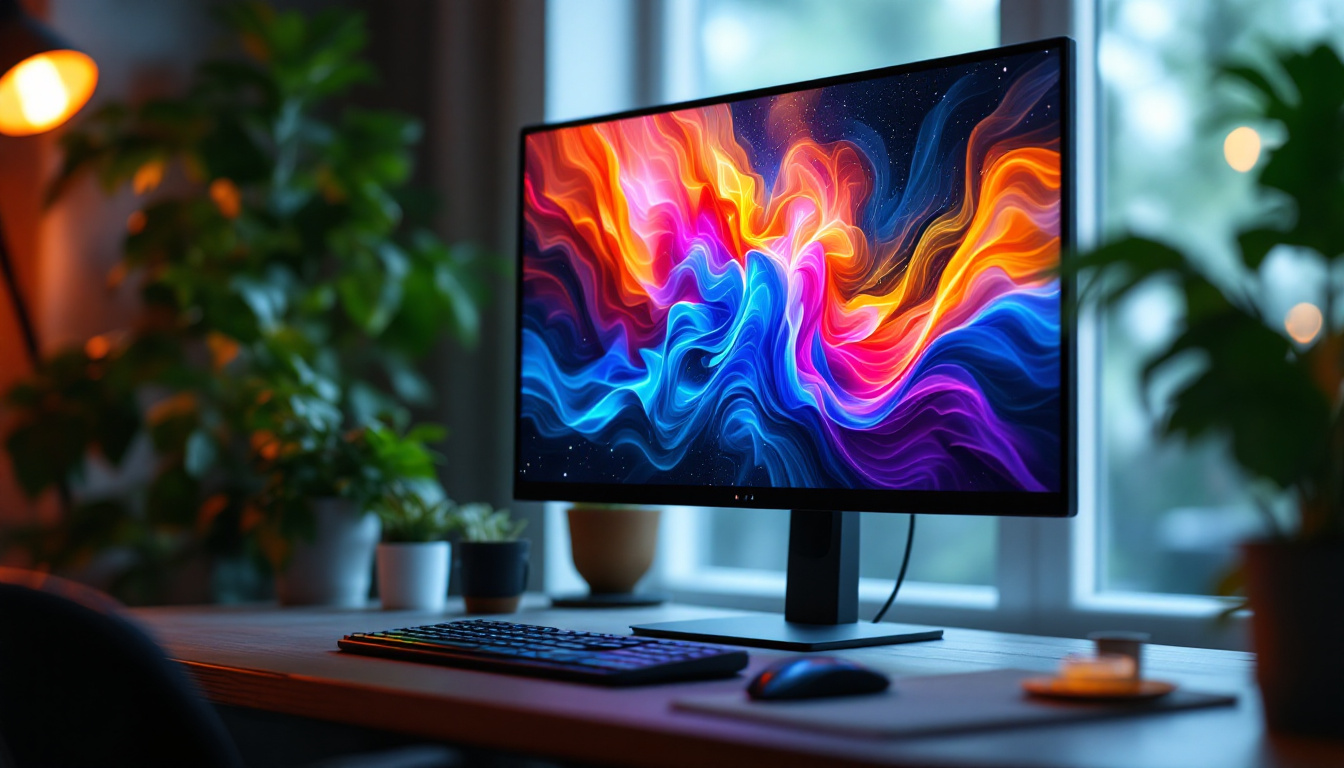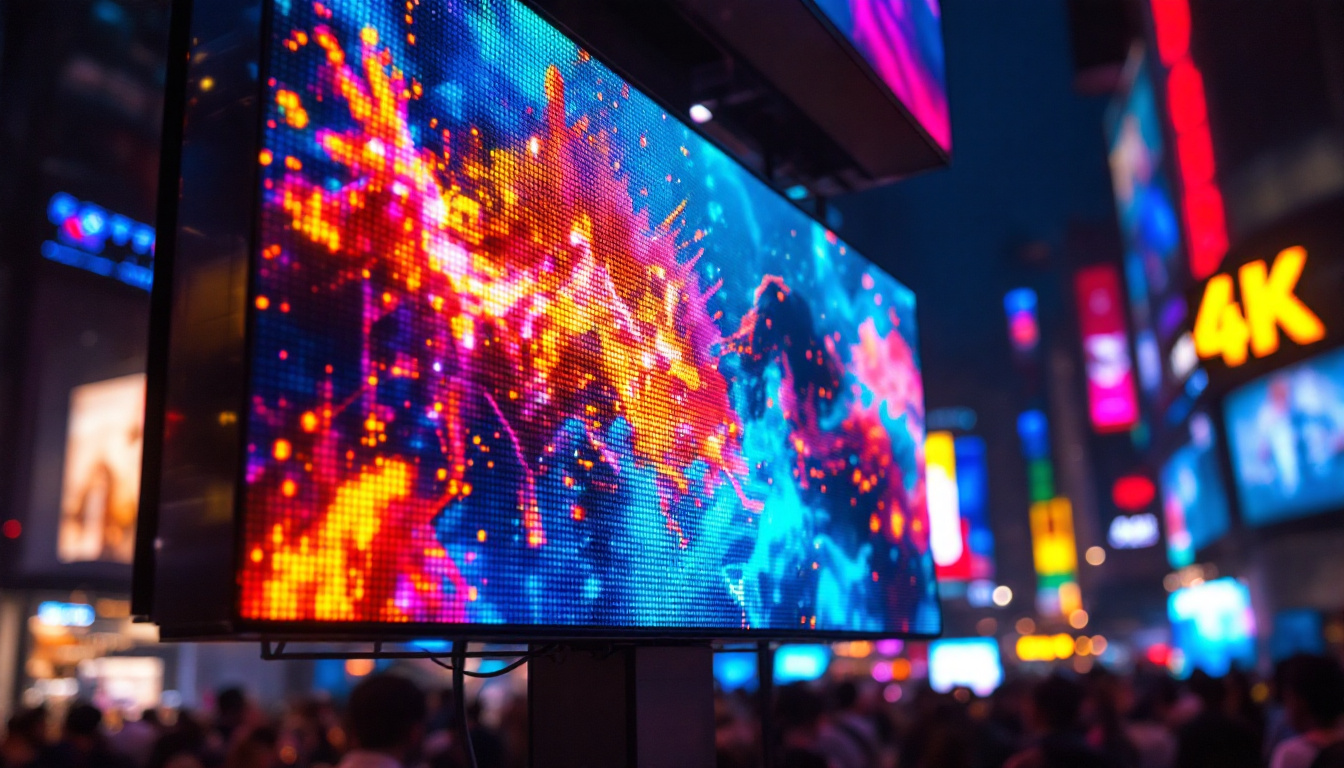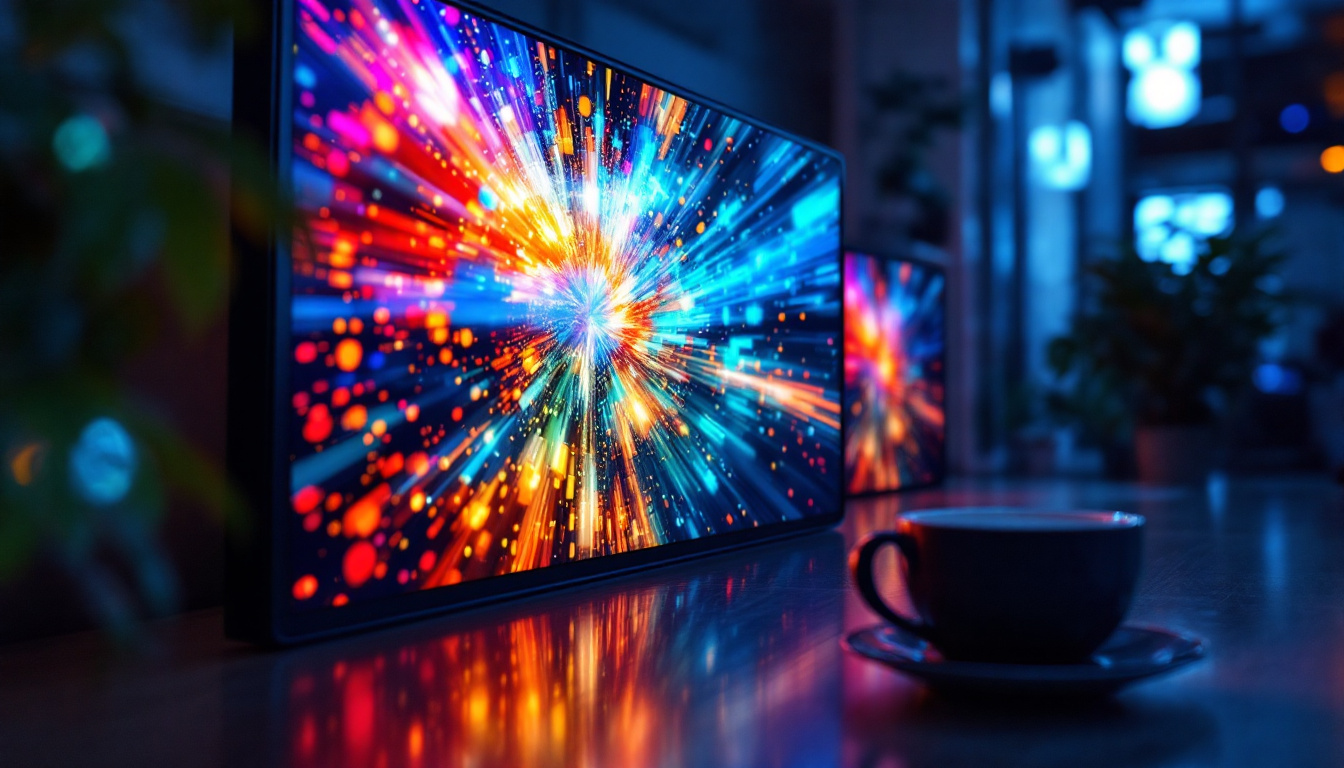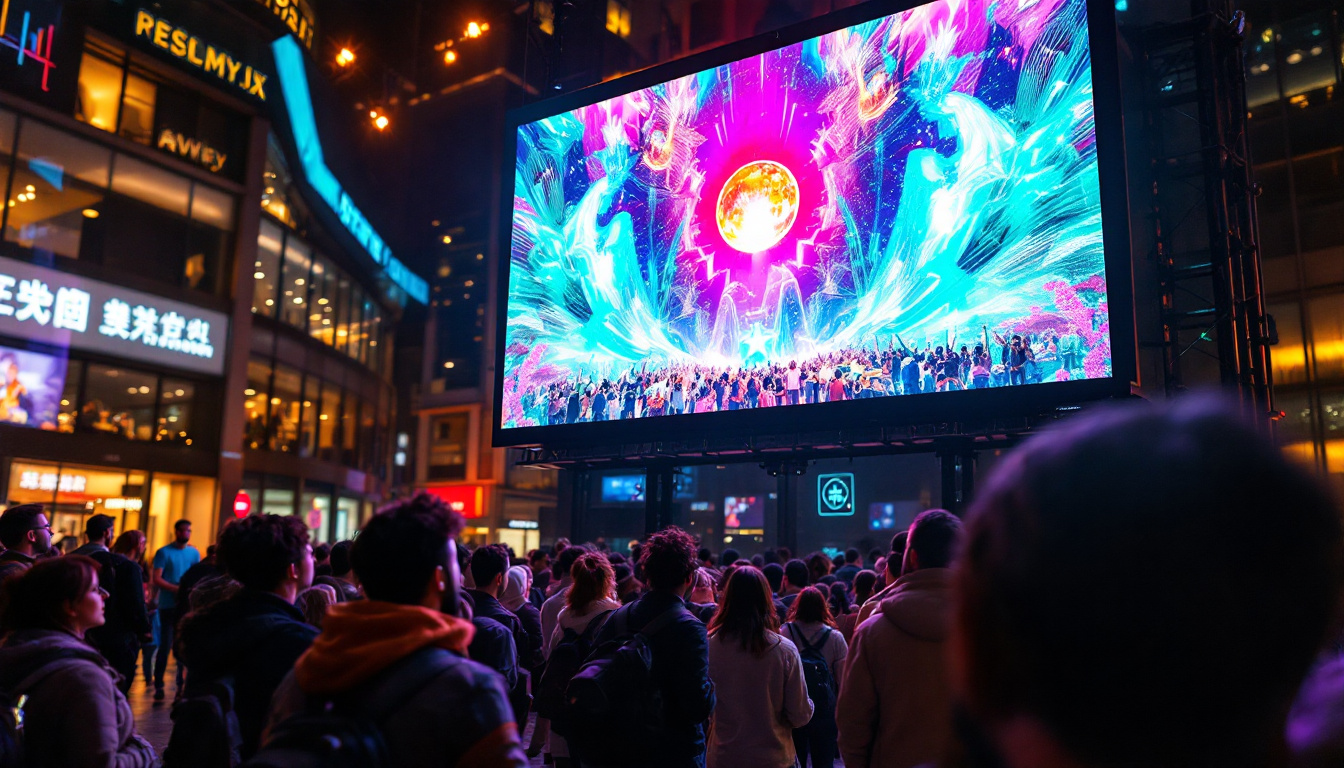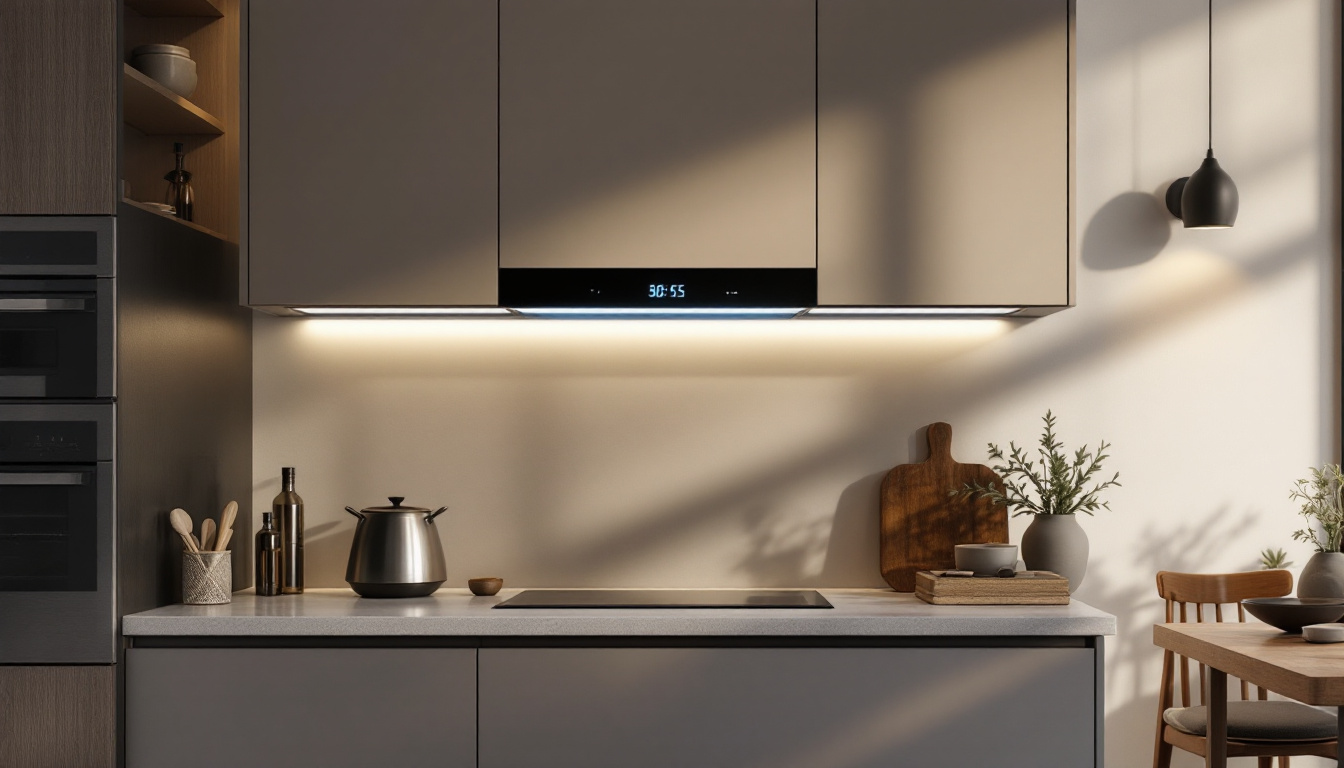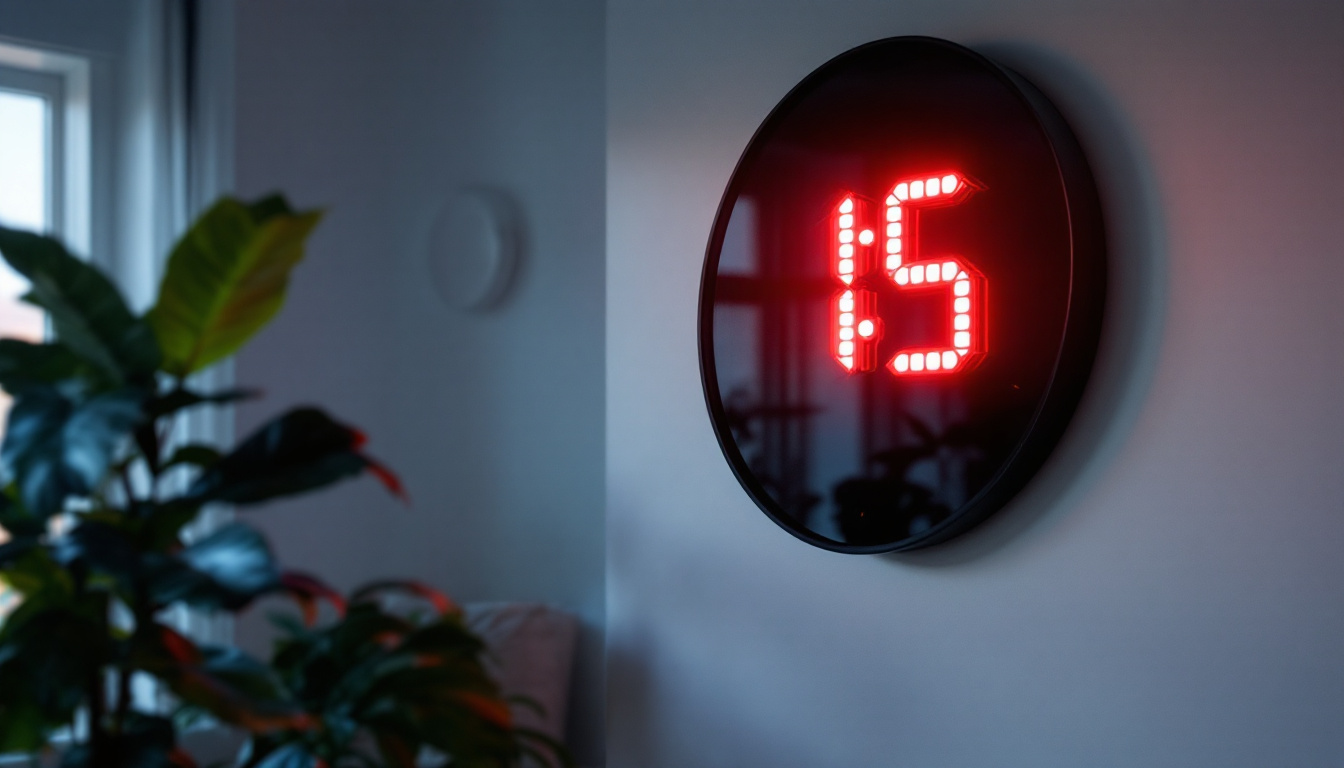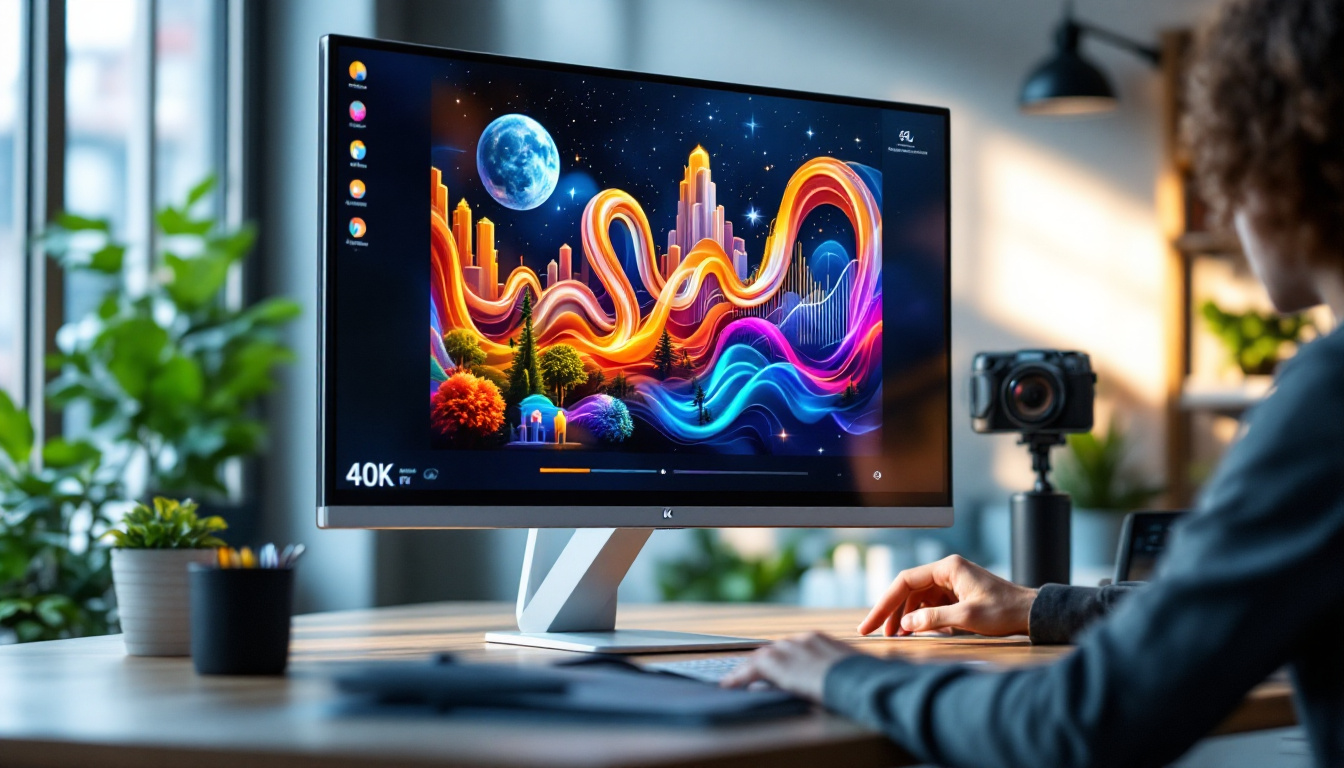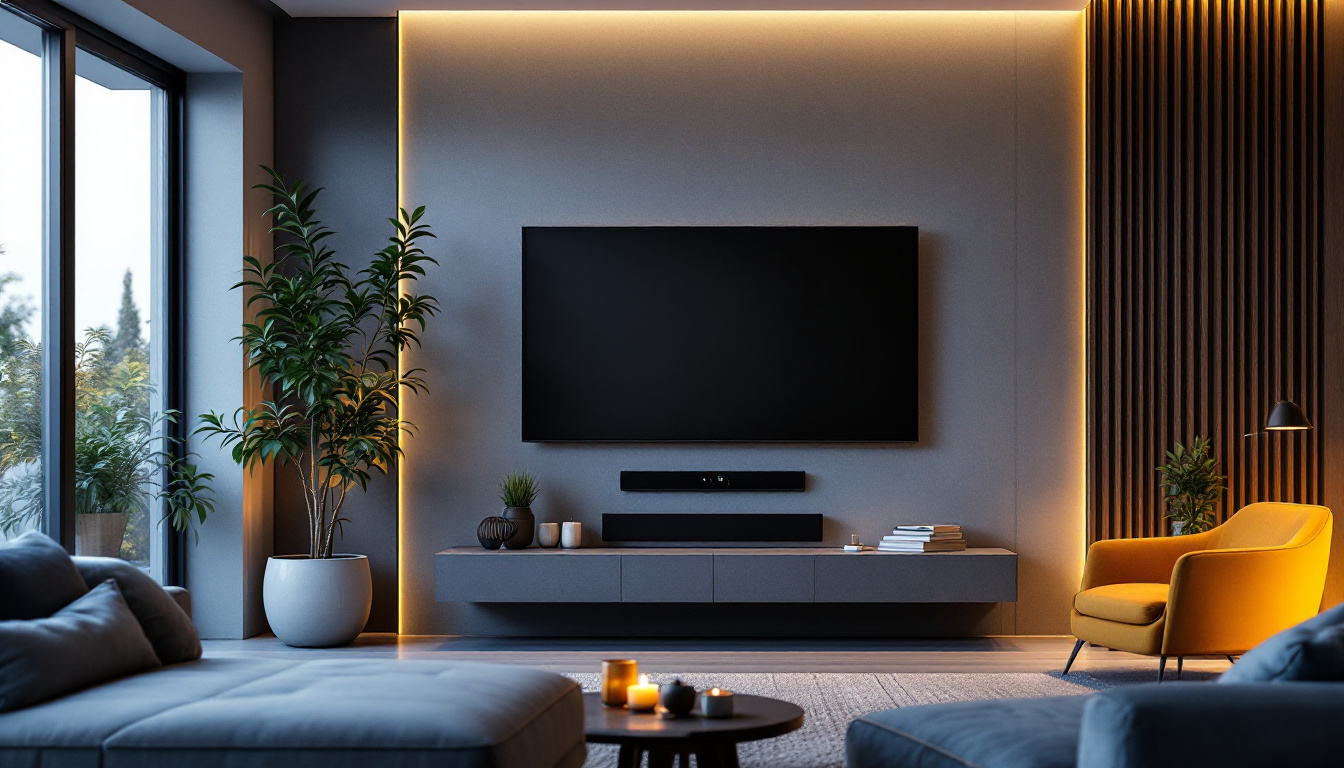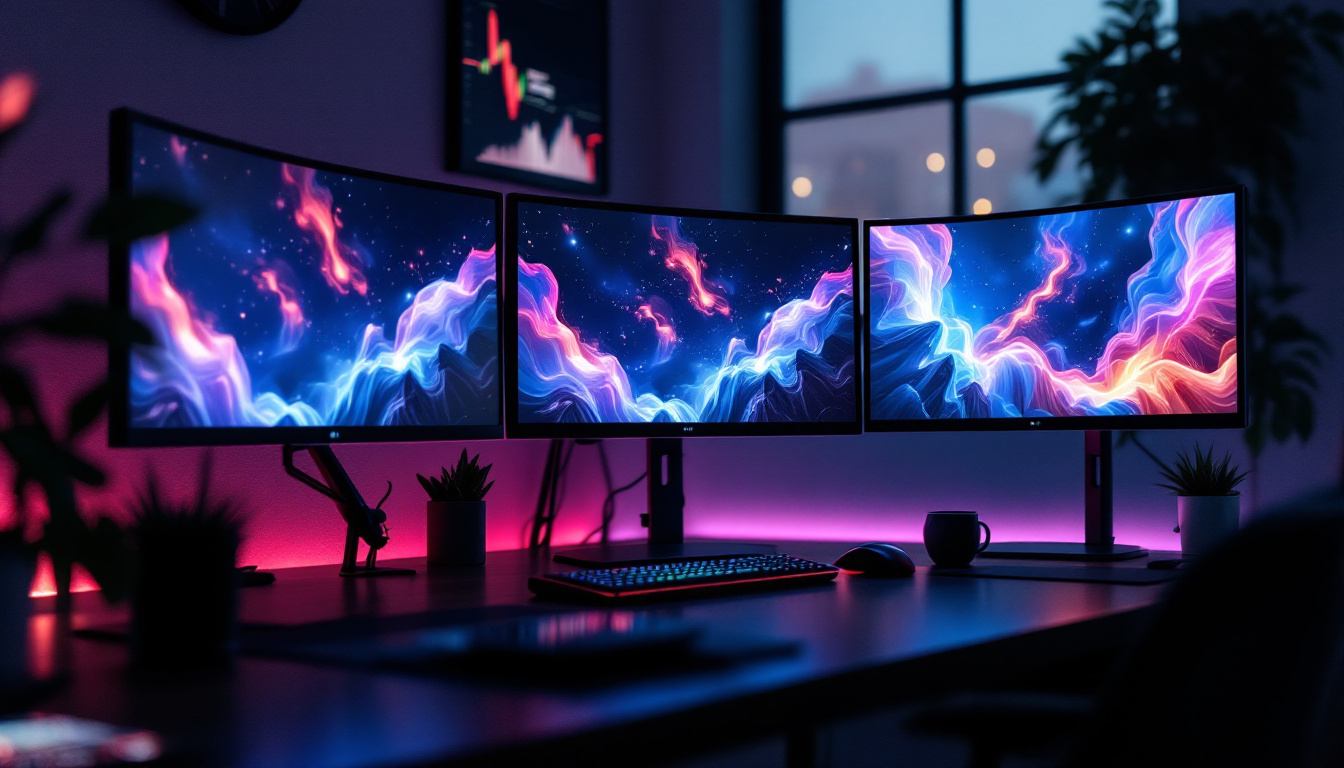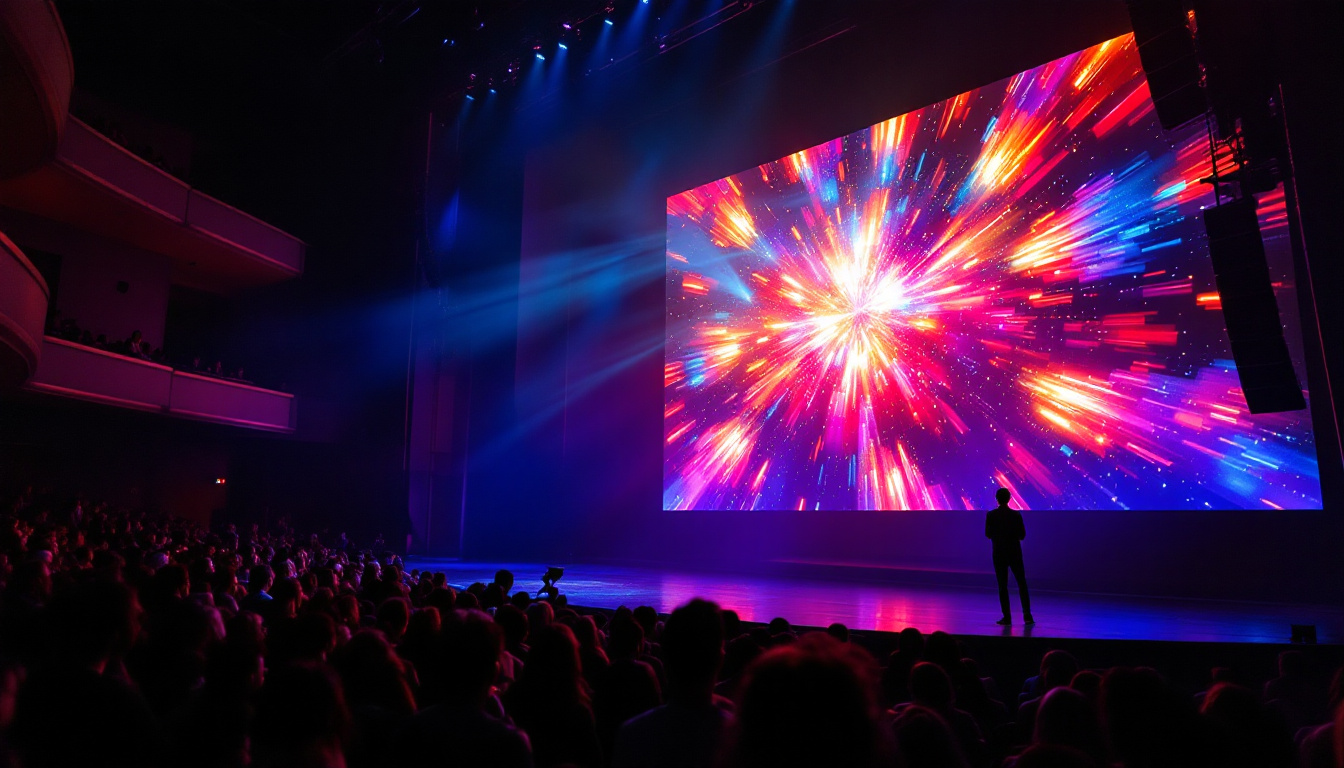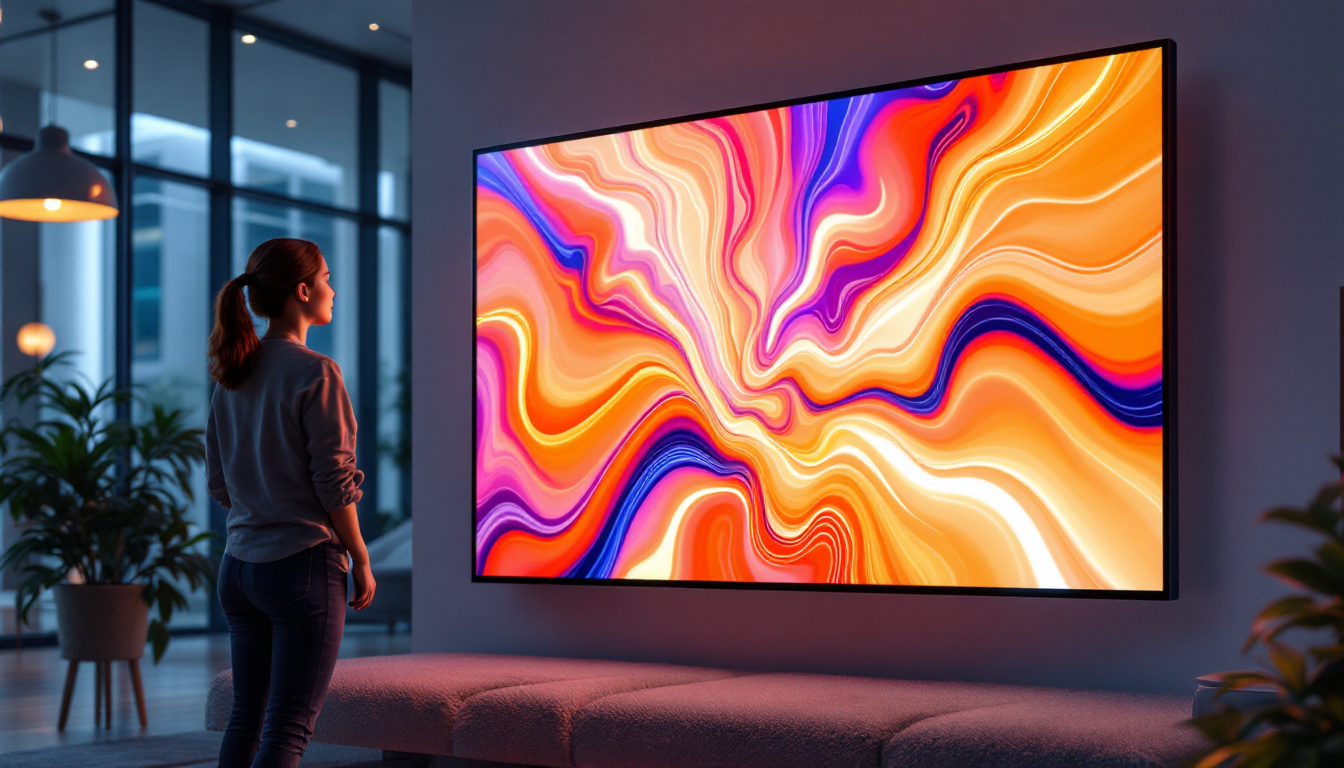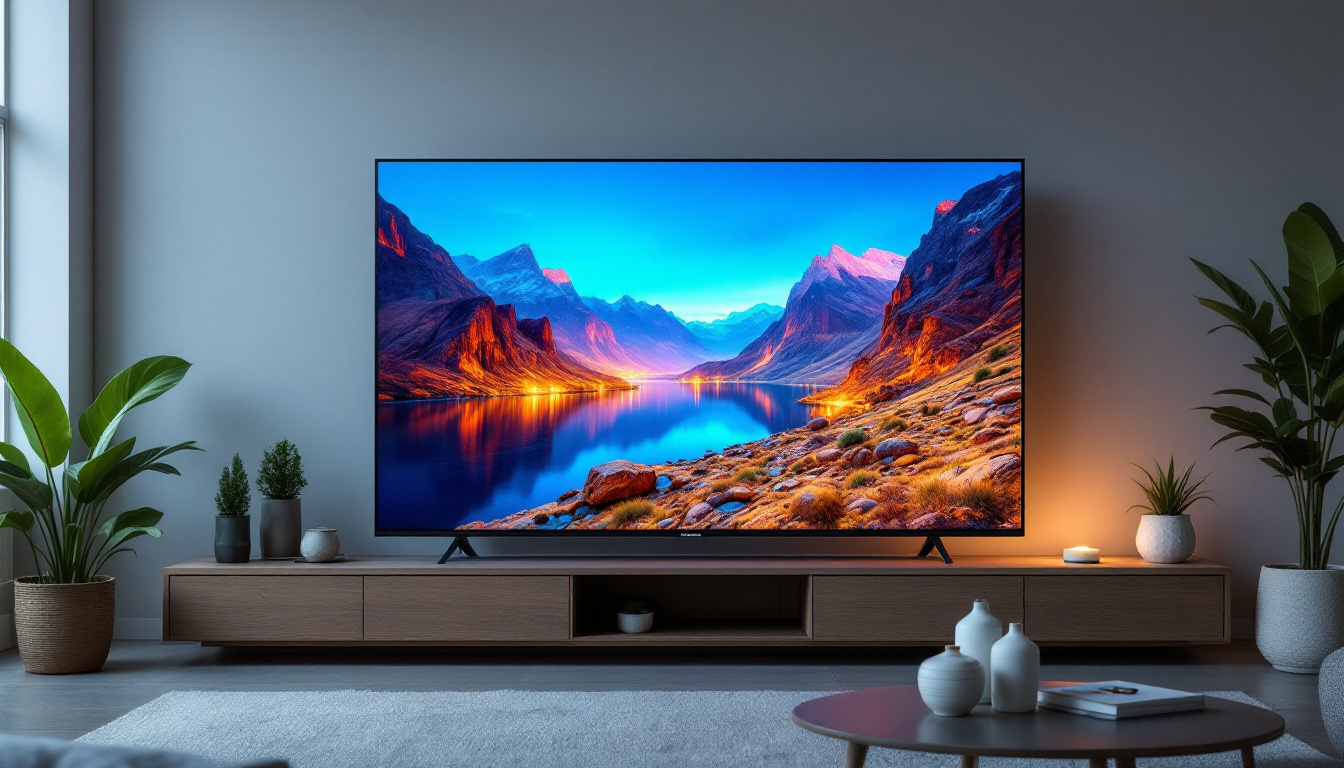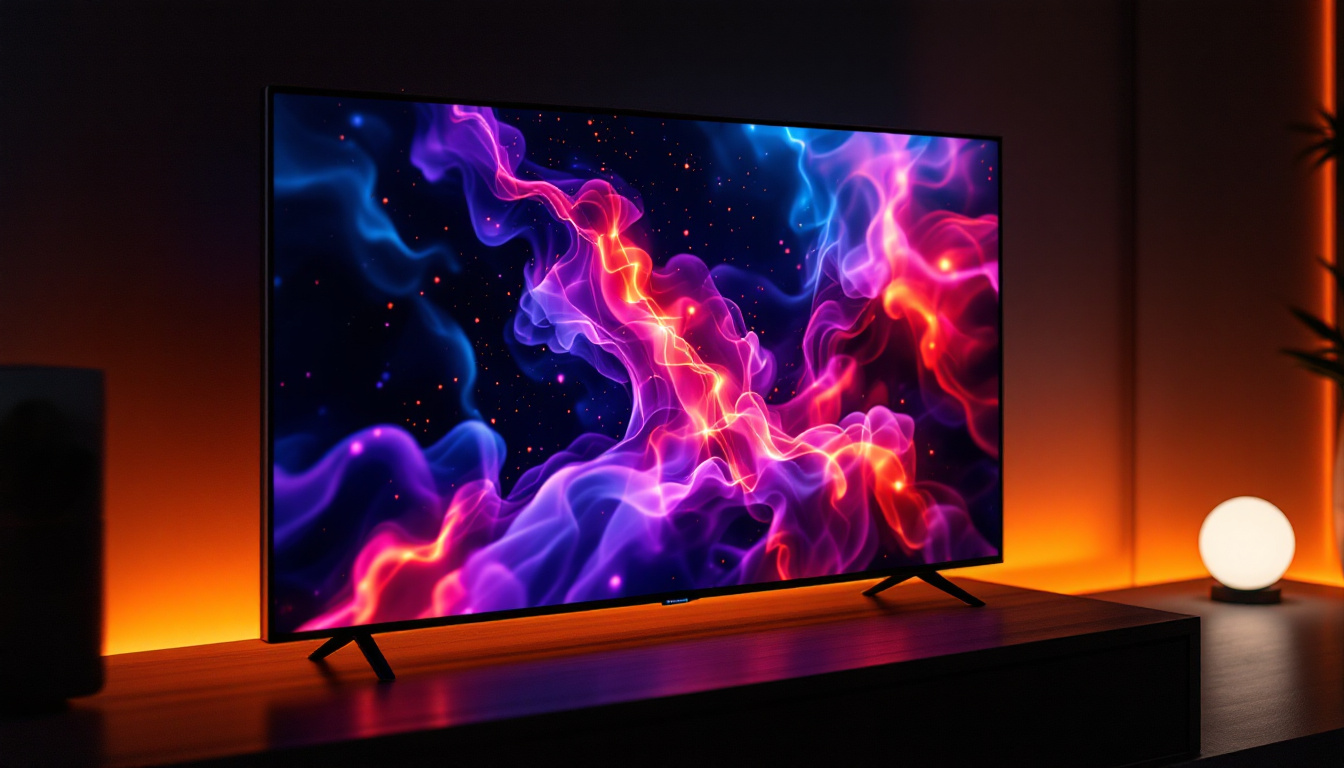In the rapidly evolving world of technology, monitors have become an essential part of daily life, whether for work, gaming, or entertainment. Among the various types of displays available, high contrast monitors with LED technology stand out for their superior visual performance. This article delves into the intricacies of high contrast monitors, exploring their benefits, functionality, and the technology that powers them.
Understanding LED Technology
LED, or Light Emitting Diode, technology has revolutionized the way displays are designed and utilized. Unlike traditional LCD monitors that rely on fluorescent backlighting, LED monitors use an array of small diodes to produce light. This shift not only enhances brightness but also improves energy efficiency. As a result, LED technology has become the standard for modern displays, from televisions to computer monitors, offering a more sustainable and visually appealing option for consumers and businesses alike.
How LED Displays Work
At the core of LED technology is the principle of electroluminescence, where a semiconductor emits light when an electric current passes through it. In LED monitors, this process allows for greater control over brightness and color accuracy. The diodes can be arranged in various configurations, such as edge-lit or full-array, which influences the overall performance and visual quality of the display. The versatility of LED technology means that it can be adapted for various applications, from small handheld devices to large-scale digital signage.
Edge-lit LED displays use diodes positioned along the edges of the screen, directing light across the panel. This design is typically thinner and more energy-efficient but may result in less uniform brightness. In contrast, full-array LED displays feature diodes placed behind the entire screen, allowing for more precise control over local dimming and contrast levels. This local dimming capability is particularly beneficial for viewing content in dark environments, as it can enhance the depth of shadows without sacrificing detail in brighter areas.
Benefits of LED Technology
LED technology offers numerous advantages over traditional display methods. One of the most significant benefits is the enhanced contrast ratio. High contrast monitors can produce deeper blacks and brighter whites, resulting in more vivid and lifelike images. This capability is particularly beneficial for graphic design, video editing, and gaming, where color accuracy is crucial. Furthermore, the wide color gamut provided by LED displays allows for a richer viewing experience, making them ideal for professionals in creative fields who require precise color representation.
Moreover, LED displays tend to have faster response times, reducing motion blur during fast-paced scenes. This feature is essential for gamers and professionals who rely on quick refresh rates for an optimal viewing experience. Additionally, LED technology is known for its longevity; LEDs can last significantly longer than traditional bulbs, reducing the need for frequent replacements and contributing to lower overall maintenance costs. As the demand for high-quality visual displays continues to grow, LED technology remains at the forefront, driving innovation in display solutions across various industries.
What is a High Contrast Monitor?
A high contrast monitor is specifically designed to deliver superior contrast ratios, often exceeding 1000:1. This means that the brightest whites are significantly brighter than the darkest blacks, leading to a more dynamic and immersive visual experience. High contrast monitors are particularly favored in creative fields, where accurate color representation is paramount.
Importance of Contrast Ratio
The contrast ratio is a critical specification that defines the difference in luminance between the brightest white and the darkest black a monitor can display. A higher contrast ratio enhances the depth of images, making them appear more three-dimensional. This depth is crucial for tasks that require attention to detail, such as photo editing or graphic design.
In practical terms, a monitor with a high contrast ratio can make text easier to read and images more engaging. For instance, in a dimly lit environment, a high contrast monitor can prevent eye strain by providing clearer visuals without requiring excessive brightness.
Applications of High Contrast Monitors
High contrast monitors find applications across various domains. In the creative industry, graphic designers and photographers utilize these displays to ensure that their work is accurately represented. The ability to see subtle variations in color and detail can significantly impact the quality of the final product.
In the gaming world, high contrast monitors enhance the overall experience by providing more realistic visuals. Gamers can spot enemies hiding in shadows or appreciate the intricate details of their surroundings, giving them a competitive edge.
Key Features of High Contrast Monitors
When considering a high contrast monitor, several features should be taken into account. These features not only contribute to the overall performance of the monitor but also enhance user experience.
Resolution and Panel Type
The resolution of a monitor is a crucial factor that determines the clarity of images. High contrast monitors are often available in various resolutions, including Full HD (1920×1080), Quad HD (2560×1440), and 4K (3840×2160). Higher resolutions provide more pixels, resulting in sharper images and finer details.
Additionally, the type of panel used in the monitor plays a significant role in its performance. Common panel types include IPS (In-Plane Switching), TN (Twisted Nematic), and VA (Vertical Alignment). IPS panels are known for their excellent color accuracy and wide viewing angles, making them ideal for creative work. TN panels, while faster and more affordable, may sacrifice color reproduction. VA panels offer better contrast ratios, making them suitable for high contrast displays.
Color Gamut and Calibration
Color gamut refers to the range of colors a monitor can display. High contrast monitors often support wider color gamuts, such as sRGB, Adobe RGB, or DCI-P3, which are essential for accurate color representation. A monitor that covers a larger color gamut can produce more vibrant and diverse colors.
Calibration is another vital aspect to consider. Many high-end monitors come factory-calibrated, ensuring that the colors are as accurate as possible out of the box. However, for professionals, manual calibration may be necessary to achieve the desired color accuracy.
Connectivity Options
Modern high contrast monitors come equipped with various connectivity options, allowing users to connect multiple devices easily. Common ports include HDMI, DisplayPort, USB-C, and even legacy connectors like VGA. The availability of these ports can significantly enhance the versatility of the monitor, making it suitable for different setups.
Choosing the Right High Contrast Monitor
Selecting the right high contrast monitor requires careful consideration of individual needs and preferences. Here are some key factors to keep in mind when making a decision.
Intended Use
The first step in choosing a monitor is to determine its primary use. For gamers, a monitor with a high refresh rate and low response time is crucial. Creative professionals, on the other hand, may prioritize color accuracy and resolution. Understanding the intended use will help narrow down the options and ensure the best fit.
Budget Considerations
Budget plays a significant role in the selection process. High contrast monitors can vary widely in price, depending on features and specifications. Setting a budget beforehand can help streamline the decision-making process and prevent overspending.
It is also worth considering the long-term investment. While a higher initial cost may seem daunting, investing in a quality monitor can lead to better performance and longevity, ultimately saving money in the long run.
Reviews and Recommendations
Before making a purchase, it is advisable to read reviews and seek recommendations from trusted sources. User feedback can provide valuable insights into the performance and reliability of a monitor. Additionally, professional reviews often highlight strengths and weaknesses that may not be immediately apparent.
Maintaining Your High Contrast Monitor
Once a high contrast monitor is purchased, proper maintenance is essential to ensure its longevity and optimal performance. Here are some tips for maintaining a high contrast monitor.
Regular Cleaning
Dust and fingerprints can accumulate on the screen, affecting image quality. Regular cleaning with a microfiber cloth and a suitable screen cleaner can help maintain clarity. It is important to avoid harsh chemicals that may damage the screen’s coating.
Adjusting Settings
Taking the time to adjust the monitor’s settings can significantly enhance the viewing experience. Calibration tools and software can assist in achieving the desired color accuracy and brightness levels. Regularly revisiting these settings can ensure that the monitor continues to perform optimally.
Protecting from Overheating
Heat can negatively impact a monitor’s performance and lifespan. Ensuring proper ventilation and avoiding prolonged exposure to direct sunlight can help prevent overheating. Additionally, using a surge protector can safeguard the monitor from electrical surges that may cause damage.
The Future of High Contrast Monitors
The technology behind high contrast monitors continues to evolve. As display technology advances, new features and enhancements are expected to emerge, further improving visual performance. Innovations such as OLED technology, which offers even higher contrast ratios and deeper blacks, are already making waves in the industry.
Emerging Technologies
OLED (Organic Light Emitting Diode) displays are becoming increasingly popular due to their ability to achieve true blacks by turning off individual pixels. This technology offers superior contrast ratios compared to traditional LED displays, making it an exciting option for high-end monitors.
Moreover, advancements in HDR (High Dynamic Range) technology are enhancing the viewing experience by expanding the range of colors and brightness levels. Monitors that support HDR can deliver more realistic visuals, making them ideal for both gaming and professional applications.
Conclusion
High contrast monitors equipped with LED technology provide exceptional visual performance, making them a valuable asset for various applications. By understanding the underlying technology, key features, and maintenance practices, users can make informed decisions when selecting and caring for their monitors. As technology continues to advance, the future of high contrast monitors looks promising, with new innovations set to redefine the viewing experience.
Discover LumenMatrix’s Advanced LED Displays
Ready to experience the pinnacle of high contrast visuals? LumenMatrix is at the forefront of LED display innovation, offering a diverse range of solutions tailored to elevate your visual experience. From immersive indoor walls to dynamic outdoor displays, our technology is designed to captivate and engage. Explore our Indoor LED Wall Display, Outdoor LED Wall Display, and more to find the perfect fit for your needs. Embrace the future of visual communication with LumenMatrix and check out LumenMatrix LED Display Solutions today.

